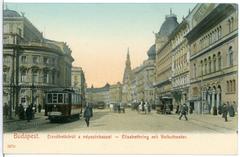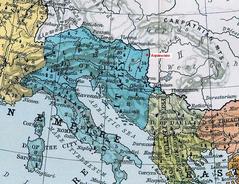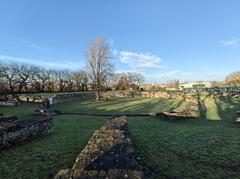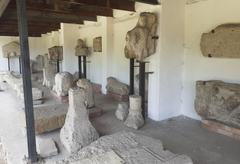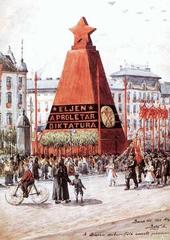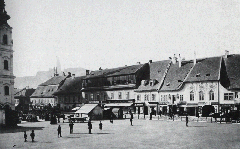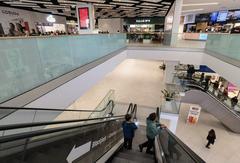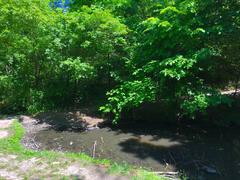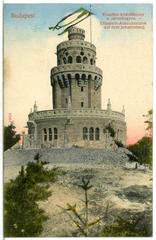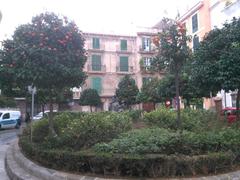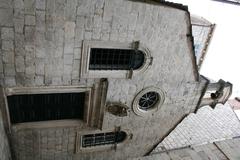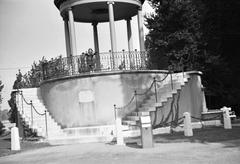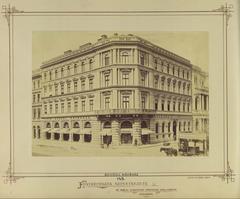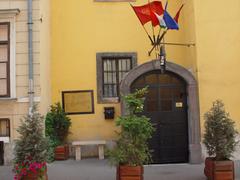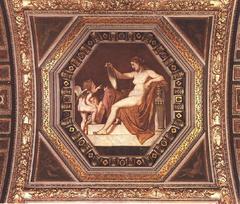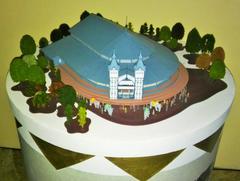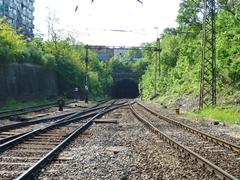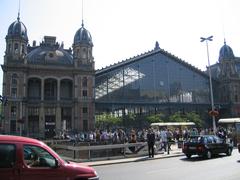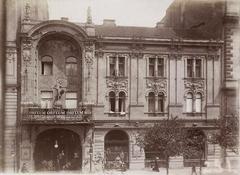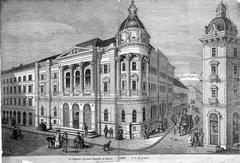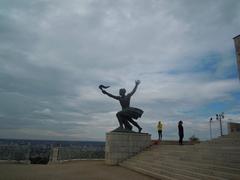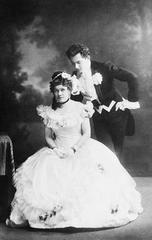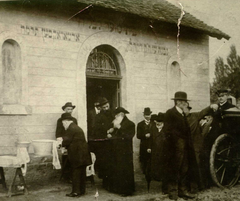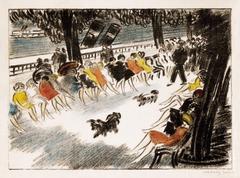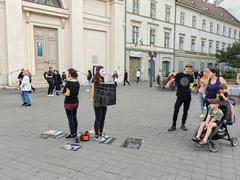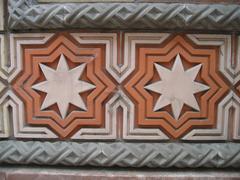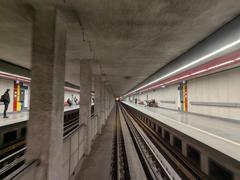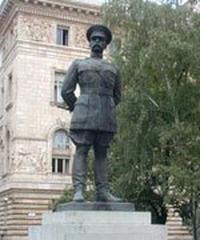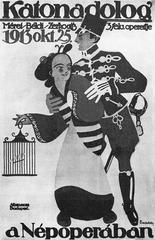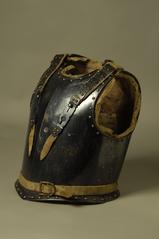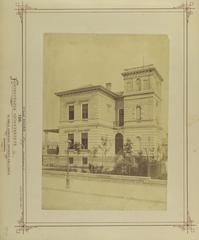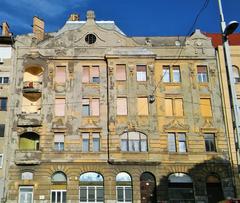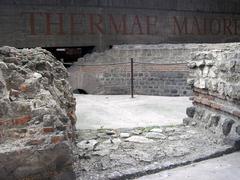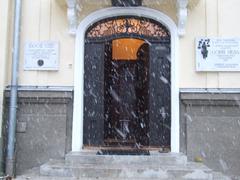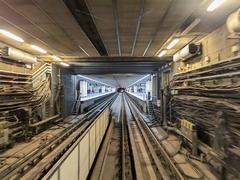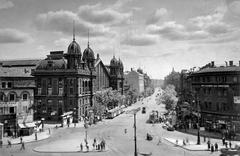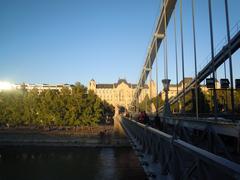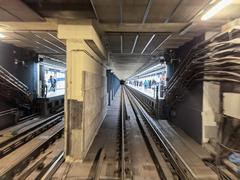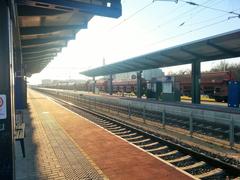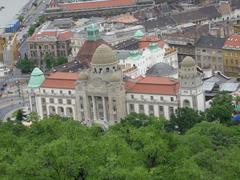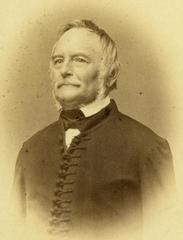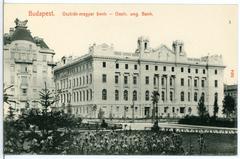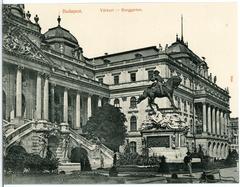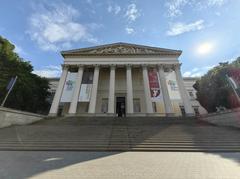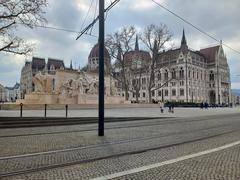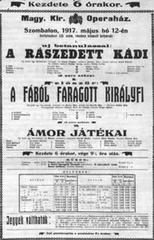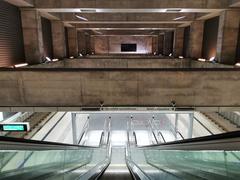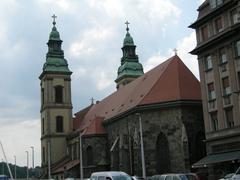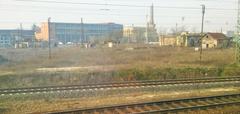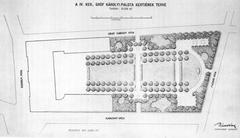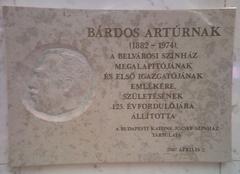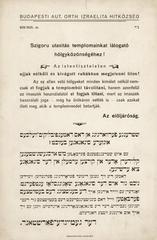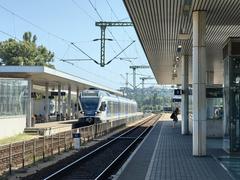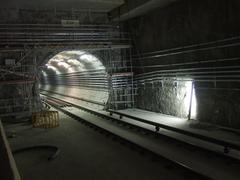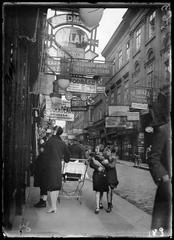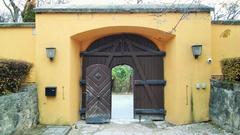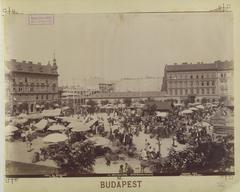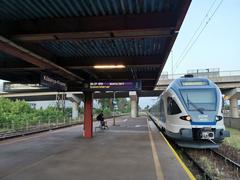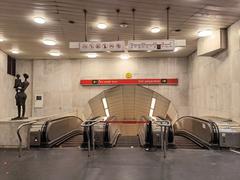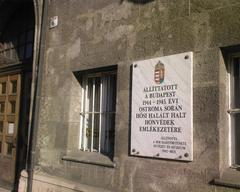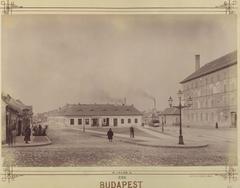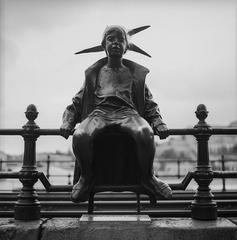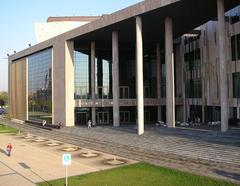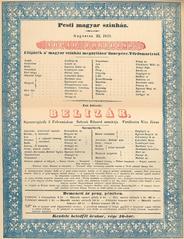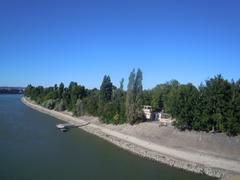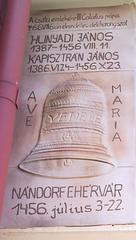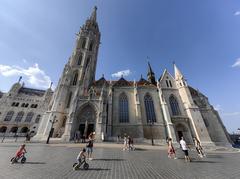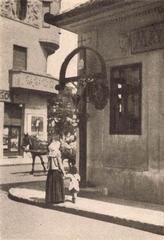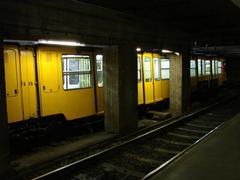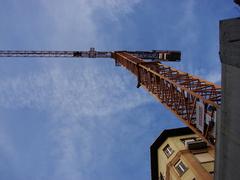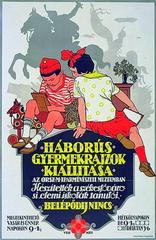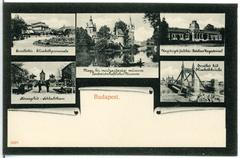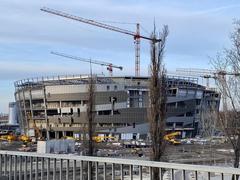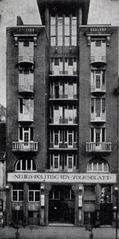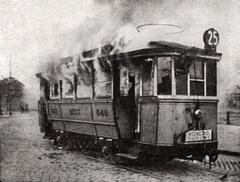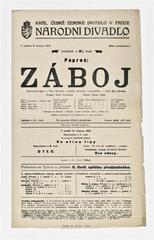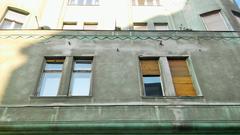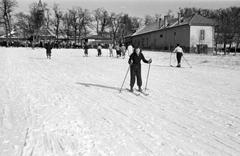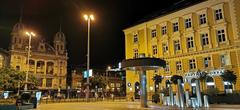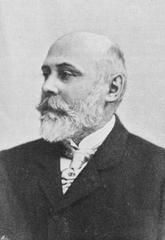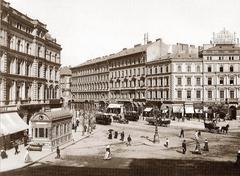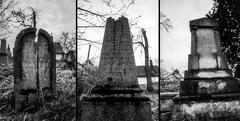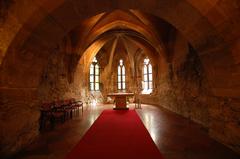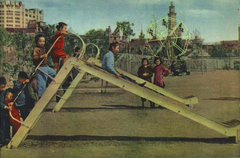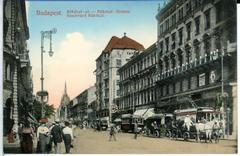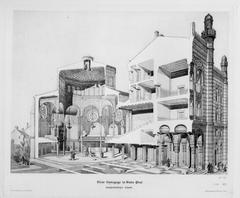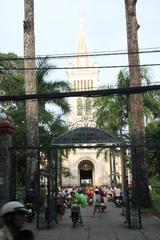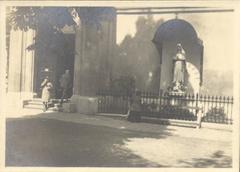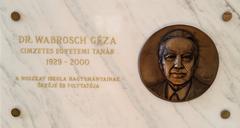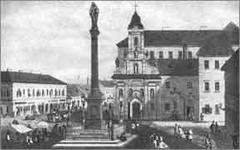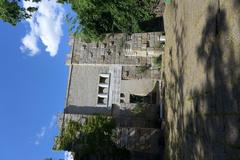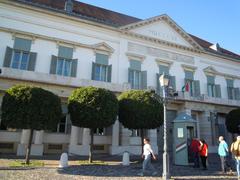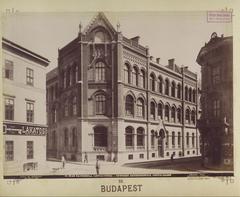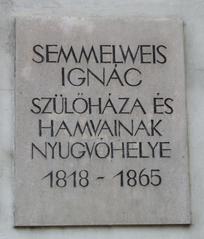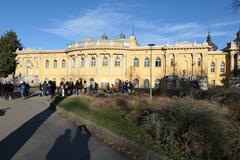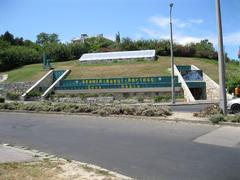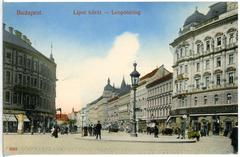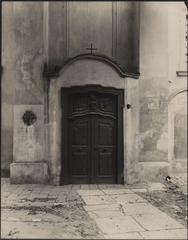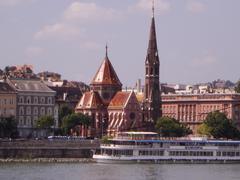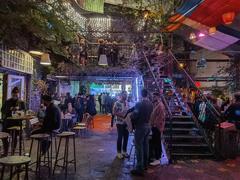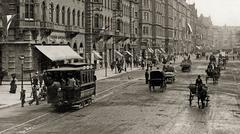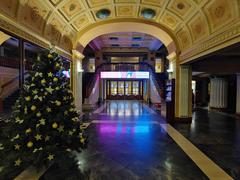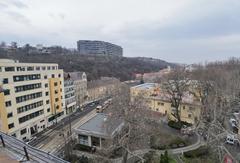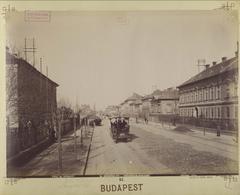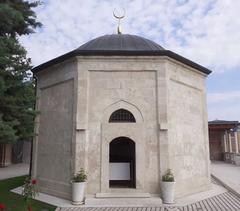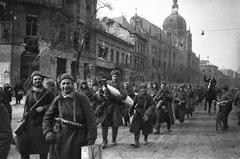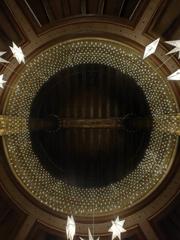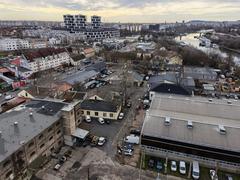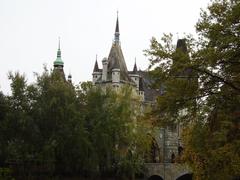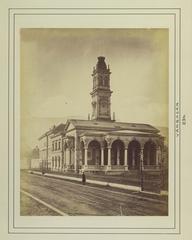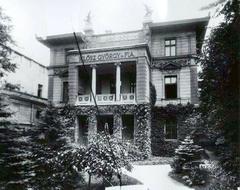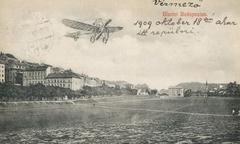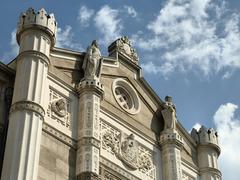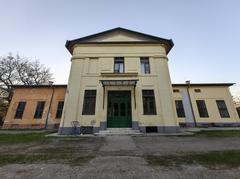Fisherman’s Bastion Visiting Guide: Hours, Tickets, and Tips
Date: 16/07/2024
Introduction
Fisherman’s Bastion, or Halászbástya, is one of Budapest’s most iconic landmarks, offering a unique blend of neo-Gothic and neo-Romanesque architectural styles. Constructed between 1895 and 1902, this terrace was designed by Frigyes Schulek to celebrate the 1000th anniversary of the Hungarian state. The structure stands as a testament to Hungary’s rich history and cultural heritage, symbolized by its seven towers representing the seven Magyar tribes that settled in the Carpathian Basin (Budapest.com). The Fisherman’s Bastion not only provides a historical narrative but also serves as a panoramic viewpoint, offering breathtaking vistas of the Danube River, the Hungarian Parliament Building, and other significant landmarks (Hungary Today). This guide aims to provide a comprehensive overview of Fisherman’s Bastion, covering its historical significance, architectural marvels, visitor tips, and nearby attractions, ensuring you make the most out of your visit to this remarkable site.
Table of Contents
Fisherman’s Bastion in Budapest
Historical Significance and Architectural Design
Origins and Purpose
Fisherman’s Bastion, or Halászbástya in Hungarian, is a neo-Gothic and neo-Romanesque terrace located in Budapest, Hungary. Constructed between 1895 and 1902, it was designed by architect Frigyes Schulek. The structure was built to celebrate the 1000th anniversary of the Hungarian state, marking the arrival of the Hungarian tribes in the Carpathian Basin in 895 AD. The name “Fisherman’s Bastion” is derived from the medieval guild of fishermen who were responsible for defending this part of the city walls during the Middle Ages (Budapest.com).
Symbolism and National Identity
The Fisherman’s Bastion is not just a historical monument but also a symbol of Hungarian national identity. The seven towers of the Bastion represent the seven Magyar tribes that settled in the Carpathian Basin, laying the foundation for the Hungarian nation. This symbolism is deeply ingrained in the Hungarian cultural and historical narrative, making the Bastion a site of national pride (Hungary Today).
Architectural Design
Neo-Gothic and Neo-Romanesque Styles
The architectural design of Fisherman’s Bastion is a blend of neo-Gothic and neo-Romanesque styles. Frigyes Schulek, the architect, was inspired by the romanticism of the 19th century, which sought to revive medieval architectural forms. The structure features pointed arches, spires, and intricate stone carvings that are characteristic of the neo-Gothic style. The rounded arches and robust columns, on the other hand, are elements of the neo-Romanesque style (ArchDaily).
Structural Elements
The Bastion is composed of seven towers, each symbolizing one of the seven Magyar tribes. The towers are connected by a series of terraces and staircases, offering panoramic views of the Danube River, Margaret Island, and the Pest side of the city. The main terrace is a popular spot for tourists, providing a breathtaking view of the Hungarian Parliament Building and other landmarks (Budapestinfo).
Restoration and Preservation
The Fisherman’s Bastion underwent significant restoration work after World War II, as it suffered considerable damage during the Siege of Budapest. The restoration was led by Frigyes Schulek’s son, János Schulek, who aimed to preserve the original design while incorporating modern construction techniques. Today, the Bastion is a UNESCO World Heritage site, recognized for its architectural and historical significance (UNESCO).
Visitor Tips
Best Time to Visit
The Fisherman’s Bastion is open year-round, but the best time to visit is during the early morning or late afternoon to avoid the crowds. The site is particularly enchanting at sunset when the golden hues of the setting sun illuminate the white stone of the Bastion, creating a magical atmosphere (Lonely Planet).
Accessibility
The Bastion is easily accessible by public transportation. Visitors can take the metro to Batthyány Square or the bus to Clark Ádám Square and then walk up the hill to the Bastion. For those who prefer a more leisurely ascent, the Buda Castle Funicular offers a scenic ride up the hill (Budapestinfo).
Entry Fees
While access to the lower terraces of the Fisherman’s Bastion is free, there is a small fee to enter the upper terraces. The fee is used for the maintenance and preservation of the site. Tickets can be purchased on-site or online for convenience (Budapest Card).
Guided Tours
For a more in-depth understanding of the Fisherman’s Bastion, guided tours are available. These tours provide historical context, architectural insights, and fascinating anecdotes about the site. Many tours also include visits to nearby attractions such as Matthias Church and Buda Castle (GetYourGuide).
Nearby Attractions
Matthias Church
Adjacent to the Fisherman’s Bastion is Matthias Church, another architectural gem designed by Frigyes Schulek. The church, with its colorful tiled roof and intricate interior, is a must-visit for anyone interested in Hungarian history and architecture (Matthias Church).
Buda Castle
A short walk from the Fisherman’s Bastion is Buda Castle, a historical palace complex that now houses the Hungarian National Gallery and the Budapest History Museum. The castle offers a deep dive into Hungary’s royal history and art heritage (Buda Castle).
Hospital in the Rock
For a unique and sobering experience, visitors can explore the Hospital in the Rock, a museum located in a former emergency hospital and nuclear bunker beneath Buda Castle Hill. The museum offers guided tours that provide insights into Hungary’s wartime history (Hospital in the Rock).
FAQ
What are the visiting hours for Fisherman’s Bastion?
The Fisherman’s Bastion is open 24/7. However, the upper terraces have specific hours, typically from 9:00 AM to 7:00 PM, depending on the season.
How much do tickets cost for Fisherman’s Bastion?
Access to the lower terraces is free, but tickets for the upper terraces cost around 1000 HUF for adults and 500 HUF for children and students.
Are guided tours available?
Yes, guided tours are available and highly recommended for a comprehensive understanding of the site’s history and architecture.
Is Fisherman’s Bastion accessible by public transportation?
Yes, it can be accessed via metro to Batthyány Square or bus to Clark Ádám Square, followed by a short walk or a ride on the Buda Castle Funicular.
Conclusion
Fisherman’s Bastion is more than just a vantage point; it is a symbol of Hungarian national pride and history. Its intricate architectural design and historical significance make it a must-visit location for anyone traveling to Budapest. Whether you are interested in its neo-Gothic and neo-Romanesque architectural styles, panoramic views, or nearby attractions like Matthias Church and Buda Castle, Fisherman’s Bastion offers something for everyone. The site is easily accessible by public transportation and offers various amenities to ensure a comfortable visit (Budapestinfo). By understanding its historical context and architectural intricacies, visitors can fully appreciate the cultural and historical essence of this iconic landmark. For more travel tips and updates, consider downloading the Audiala app or following related social media channels.
References
- Fisherman’s Bastion - Visiting Hours, Tickets, and Historical Significance in Budapest: Budapest.com
- Fisherman’s Bastion - Visiting Hours, Tickets, and Historical Significance in Budapest: Hungary Today
- Fisherman’s Bastion - Visiting Hours, Tickets, and Historical Significance in Budapest: ArchDaily
- Visiting Fisherman’s Bastion - History, Tickets, and Travel Tips: Budapestinfo
- Visiting Fisherman’s Bastion - History, Tickets, and Travel Tips: UNESCO
- Fisherman’s Bastion - Visiting Hours, Tickets, and Historical Significance in Budapest: Lonely Planet
- Fisherman’s Bastion - Visiting Hours, Tickets, and Historical Significance in Budapest: Budapest Card
- Visiting Fisherman’s Bastion - History, Tickets, and Travel Tips: GetYourGuide
- Visiting Fisherman’s Bastion - History, Tickets, and Travel Tips: Matthias Church
- Visiting Fisherman’s Bastion - History, Tickets, and Travel Tips: Buda Castle
- Visiting Fisherman’s Bastion - History, Tickets, and Travel Tips: Hospital in the Rock
- Complete Guide - Visiting Hours, Tickets, and Tips for Fisherman’s Bastion in Budapest: Budapest Castle District website
